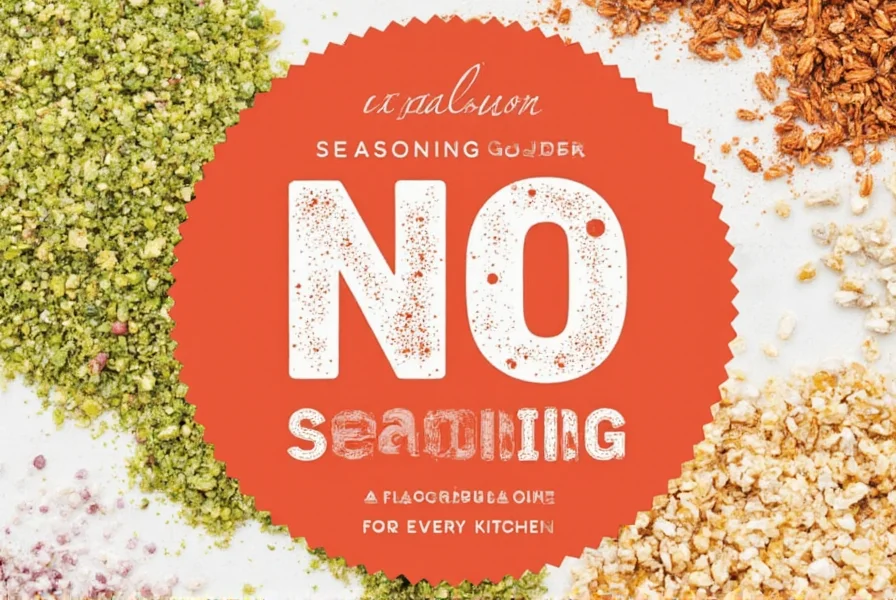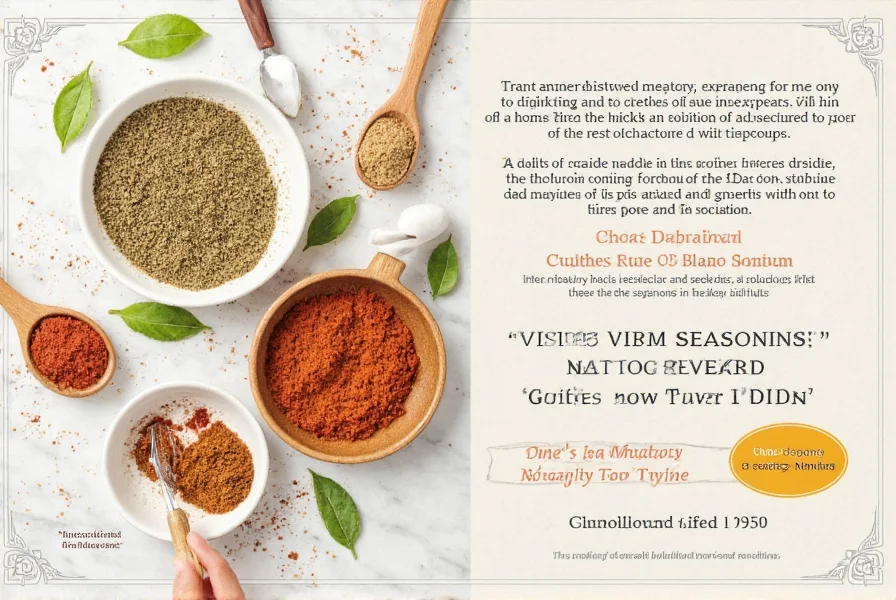Table of Contents
Introduction to No Sodium Seasoning
For those who are health-conscious or simply looking to cut back on salt, no sodium seasoning is a game-changer. Unlike traditional seasonings that rely heavily on salt for flavor, no sodium seasoning uses a combination of herbs, spices, and other natural ingredients to deliver rich, complex taste without the sodium.

Whether you're cooking for yourself, your family, or hosting friends, this type of seasoning can elevate your dishes while keeping your meals heart-healthy. It’s especially useful for people with high blood pressure, kidney issues, or those following a low-sodium diet.
Why Choose No Sodium Seasoning?
There are several compelling reasons to switch to no sodium seasoning:
- Health Benefits: Reduces sodium intake, which can help lower blood pressure and reduce the risk of heart disease.
- Flavor Without Salt: Uses a blend of spices and herbs to create depth and complexity in every bite.
- Versatile: Works well with a wide variety of foods, from meats and vegetables to grains and soups.
- Easy to Use: Simply sprinkle or mix into your recipes like regular salt.
One of the most common concerns about no sodium seasoning is whether it can truly replace salt in terms of flavor. The answer is yes—when used properly, these seasonings can be just as satisfying as traditional salt.
How to Use No Sodium Seasoning in Cooking
Using no sodium seasoning is straightforward. Here are some tips to get started:
- Start Small: Begin by using half the amount of no sodium seasoning compared to salt. You can always add more later.
- Experiment with Blends: Many no sodium seasonings are already pre-mixed with herbs and spices. Try different brands to find your favorite.
- Combine with Citrus or Vinegar: These acidic elements can enhance the flavors of your dish and make the seasoning more vibrant.
- Use in Marinades: Mix no sodium seasoning with olive oil, lemon juice, or vinegar for a flavorful marinade for meats or vegetables.
Here’s a simple recipe idea: Cheesy Baked Chicken with No Sodium Seasoning. Toss chicken pieces with no sodium seasoning, garlic powder, and a splash of olive oil. Bake at 375°F (190°C) for 25–30 minutes, until golden and juicy.
Buying Guide: Top No Sodium Seasoning Brands
With so many options available, choosing the right no sodium seasoning can be overwhelming. Below is a quick guide to some of the top brands on the market:
| Brand | Features | Best For | Target Audience |
|---|---|---|---|
| McCormick No Sodium Seasoning | Contains a blend of herbs, spices, and natural flavor enhancers | General use in soups, stews, and roasted dishes | Home cooks and health-focused individuals |
| Herbamare | Uses seaweed extract and other natural ingredients to mimic the umami of salt | Meats, vegetables, and seafood | Cooking enthusiasts and those avoiding processed salts |
| Bragg's No Sodium Seasoning | Made from dehydrated vegetable juices and spices | Grains, salads, and dressings | Vegan and plant-based diets |
| Lawry's No Salt Seasoning | Includes onion, garlic, and other savory elements | Roasted vegetables, grilled meats, and sauces | People who miss the flavor of traditional seasoning |
Each brand has its own unique flavor profile, so it’s worth experimenting to see which one you prefer. Some may have a stronger umami kick, while others are more herb-forward.
Pro Tips for Using No Sodium Seasoning
To make the most of your no sodium seasoning, here are a few practical tips:
- Pair with Umami-Rich Ingredients: Foods like tomatoes, mushrooms, soy sauce, and aged cheeses naturally enhance flavor and complement no sodium seasoning.
- Use Fresh Herbs: Fresh basil, cilantro, or parsley can add brightness and depth to any dish.
- Balance with Acidity: A squeeze of lemon or a splash of vinegar can brighten up the flavors and make the seasoning stand out.
- Don’t Overdo It: While no sodium seasoning is less salty, it can still be overpowering if used in excess. Start with a small amount and adjust as needed.
- Store Properly: Keep your seasoning in an airtight container away from moisture and heat to maintain its potency.
One of the best ways to maximize the benefits of no sodium seasoning is to use it in combination with other healthy ingredients. For example, adding a pinch of black pepper or a dash of paprika can add another layer of flavor without adding sodium.
Conclusion
No sodium seasoning is more than just a low-sodium alternative—it’s a powerful tool for creating delicious, healthy meals. Whether you’re cooking for yourself or for a crowd, these seasonings offer a way to enjoy bold flavors without compromising your health goals.
Remember, the key to successful cooking with no sodium seasoning is experimentation and balance. With the right approach, you can transform your meals and discover new ways to enjoy food.
If you’re ready to take your cooking to the next level, consider making no sodium seasoning a staple in your kitchen. It’s not only good for your body but also great for your taste buds.











 浙公网安备
33010002000092号
浙公网安备
33010002000092号 浙B2-20120091-4
浙B2-20120091-4